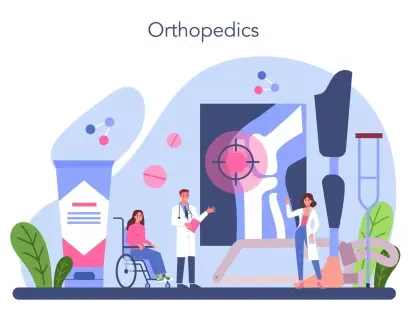Overview of Healthcare Landscape in Northeast Ohio
The healthcare landscape in Northeast Ohio presents a complex picture of progress and persistent challenges, with access to primary care remaining a critical concern for many residents who face disparities in service availability. Despite the presence of renowned institutions like Cleveland Clinic, suburban and rural communities often deal with long wait times and limited provider networks, which hinder timely care and impact overall health outcomes in the region. Quality of care varies widely, often tied to socioeconomic factors, leaving gaps that need to be addressed.
Major hospitals and clinics, including University Hospitals and MetroHealth, play a pivotal role in shaping healthcare delivery, yet the demand for primary care often outstrips supply. Technology has emerged as a transformative force, with telehealth platforms gaining traction to bridge geographic barriers and improve patient engagement. Electronic health records and mobile health apps are increasingly integrated into care systems, though adoption rates lag in underserved areas due to digital literacy and infrastructure constraints.
Primary care serves as the cornerstone of community health, facilitating early intervention and chronic disease management that can reduce hospital readmissions. However, challenges such as physician shortages and fragmented care coordination prevent many Ohioans from accessing these vital services promptly. Addressing these gaps requires innovative partnerships and scalable solutions to ensure equitable health access across diverse populations.
Details of the Amazon One Medical and Cleveland Clinic Partnership
Key Features of the Collaboration
A groundbreaking partnership between Amazon One Medical and Cleveland Clinic has introduced a new era of primary care in Northeast Ohio, marked by the opening of the first office in Avon, Ohio, at 36040 Detroit Road, Suite A. This initial step sets the stage for expanded reach, with a second location planned for Shaker Heights by early next year. The collaboration merges One Medical’s technology-driven approach with Cleveland Clinic’s deep-rooted clinical expertise, creating a robust framework for patient care.
The Avon office offers a comprehensive suite of services designed to meet diverse health needs, including preventive screenings for early detection of conditions, chronic condition management for issues like diabetes, and immediate care for acute ailments. On-site lab services further enhance convenience by eliminating the need for external testing facilities, while the physical environment is crafted to provide a calming and welcoming experience for patients seeking care.
A hallmark of this initiative is the integration of in-person visits with 24/7 virtual care options, ensuring patients have access to medical support at any time through video consultations for minor health concerns. This hybrid model caters to the modern demand for flexibility, allowing individuals to address health issues without the constraints of traditional office hours. Such innovation positions the partnership as a leader in redefining primary care delivery.
Impact on Accessibility and Community Health
Accessibility stands at the core of this collaboration, with same-day and next-day appointments available to reduce wait times significantly for patients in need of urgent attention. Membership options, including a discounted rate of $9 per month or $99 per year for Amazon Prime members, provide added value through virtual care access, while many in-person and scheduled remote visits are covered by major insurance plans. Over 10,000 employers nationwide also sponsor memberships, broadening the reach to a wider workforce.
This initiative targets a diverse patient demographic, ensuring inclusivity by accepting a variety of insurance providers to accommodate varying economic backgrounds. The focus on accessibility extends beyond mere availability, aiming to dismantle barriers that have historically limited healthcare engagement in Northeast Ohio. By prioritizing ease of access, the partnership addresses a fundamental need for timely medical intervention across communities.
Community health outcomes are poised for improvement through an emphasis on preventive care and sustained management of chronic diseases, aligning with broader public health objectives. By fostering early detection and consistent follow-up, the collaboration seeks to mitigate the progression of illnesses that burden both individuals and the healthcare system. This proactive stance underscores a shared mission to elevate wellness standards region-wide.
Challenges in Expanding Healthcare Access in Ohio
Expanding primary care services across Ohio faces significant hurdles, including infrastructure limitations that restrict the establishment of new facilities in remote or economically disadvantaged areas. Workforce shortages exacerbate the issue, as recruiting and retaining qualified healthcare professionals remains a persistent challenge amid growing demand. These structural barriers threaten the scalability of even the most innovative care models.
Economic and geographic disparities further complicate access, particularly for rural residents who may lack reliable transportation to reach urban-centered facilities like the new Avon office. Additionally, patient adoption of virtual care technologies encounters resistance due to unfamiliarity or limited internet connectivity in certain pockets of Northeast Ohio. These obstacles highlight the need for tailored strategies to ensure no population is left behind.
To counter these challenges, leveraging advanced technology solutions such as mobile clinics and telehealth kiosks can extend reach into underserved zones. Community outreach programs are equally vital, educating residents on available services and building trust in digital platforms. Partnerships with local organizations can also facilitate resource allocation, ensuring that expansion efforts address both logistical and cultural barriers effectively.
Regulatory and Operational Considerations in Healthcare Delivery
Navigating the regulatory landscape is essential for healthcare partnerships like this one, as compliance with Ohio state and federal health laws governs every aspect of service provision. Policies surrounding telemedicine, licensure, and reimbursement models must be meticulously followed to ensure the legitimacy and sustainability of virtual care offerings. These regulations shape how innovations are implemented without compromising patient safety or legal standards.
Data security and patient privacy emerge as paramount concerns in a technology-driven care model, especially with platforms handling sensitive health information through virtual consultations. Robust cybersecurity measures are critical to safeguard against breaches that could undermine trust in digital health solutions. The collaboration must prioritize encryption and compliance with HIPAA guidelines to protect patient confidentiality at all times.
Operational alignment between Amazon One Medical’s forward-thinking practices and Cleveland Clinic’s established protocols ensures adherence to high medical standards. This balance allows for seamless integration of innovative tools while maintaining the integrity of clinical care delivery. Regular audits and stakeholder coordination are necessary to uphold quality, demonstrating a commitment to both innovation and accountability in healthcare operations.
Future Prospects for Healthcare Innovation in Ohio
The potential for further expansion of Amazon One Medical offices across Ohio appears promising, with opportunities to establish additional locations in regions facing similar access challenges. Such growth could reshape primary care availability, particularly in areas outside major urban centers where healthcare deserts persist. Strategic planning will be key to identifying and prioritizing communities with the greatest need.
Emerging trends like telehealth proliferation and personalized care models signal a shift toward more tailored healthcare experiences, supported by artificial intelligence tools that enhance diagnostic precision and patient monitoring. These advancements hold the potential to streamline workflows for providers while offering patients greater control over their health management. Ohio stands to benefit from adopting these cutting-edge approaches on a wider scale.
Consumer preferences for convenience and digital solutions are driving demand for hybrid care options, a trend likely to influence future healthcare investments in the state. Economic factors, alongside evolving policy frameworks, will play a decisive role in determining the pace of innovation adoption. Collaborative efforts between private entities and public institutions could accelerate progress, ensuring that technological benefits reach all corners of Ohio’s diverse population.
Conclusion and Outlook for Ohio’s Healthcare Ecosystem
Reflecting on the strides made, the partnership between Amazon One Medical and Cleveland Clinic has proven to be a transformative force in enhancing primary care access across Northeast Ohio. The blend of innovative delivery methods and established medical expertise has delivered tangible improvements in patient convenience and community health outcomes. This initiative has laid a strong foundation for addressing longstanding gaps in the region’s healthcare framework.
Looking ahead, stakeholders, including policymakers and providers, should prioritize sustained investment in technology-driven solutions to replicate this model in other underserved areas. Collaborative frameworks need to be incentivized through funding and regulatory support to encourage similar partnerships. By focusing on scalable infrastructure and workforce development, the healthcare ecosystem can build resilience against future challenges.
A critical next step involves deepening community engagement to ensure that innovations reach those most in need, particularly in rural and low-income zones. Tailored education campaigns can bridge the digital divide, fostering greater acceptance of virtual care. Ultimately, the success of such endeavors hinges on a collective commitment to equity, positioning Ohio as a leader in patient-centered healthcare transformation.









